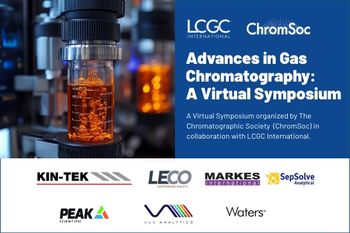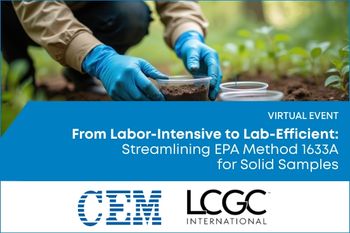
Removing Batch Sorption Contaminants Using Biochar-Based Techniques
A new tutorial article has been created focusing on the best practices in batch sorption when removing contaminants using biochar-based techniques.
A recent tutorial article led by Institute of Chemistry Ceylon researchers in Rajagiriya, Sri Lanka focused on the best practices in batch sorption when removing contaminants using biochar-based techniques. Their findings were published in the Journal of Chromatography Open (1).
As anthropogenic activities increase in frequency due to widespread industrialization and urbanization, natural water bodies have deteriorated over time. This has led to extensive research into sustainable water remediation, with adsorption being the most common areas of investigation due its cost-effective and simplistic nature. Carbon-based materials, such as activated carbon, graphene, and biochar, have been used in batch sorption studies across various applications, being known for exhibiting significant differences in adsorption capacity and selectivity. Biochar, a porous carbonaceous material typically obtained through biomass pyrolysis, is especially known for having highly tunable properties. Furthermore, it has physiochemical properties that make it suitable for the safe and long-term storage of carbon in the environment (2).
Biochar’s adsorption efficiency is largely determined by the nature of its surface functional groups and their interactions with the target adsorbate. Oxygenated functional groups are typically discussed, since they contribute to interactions such as π–π donor–acceptor interactions, hydrogen bonding, electrostatic interactions, and cation–π bonding. The extent and nature of these interactions depend on other factors, meaning there is much to learn about how biochar interacts with different compounds. Optimizing sorption parameters, such as pH, contact time, and biochar dosage, requires strict adherence to established procedures to ensure the obtained results are credible.
In this tutorial, the scientists aimed to offer a comprehensive guide on the best practices for conducting batch sorption studies and analytical quality assurance (QA) during the quantification process. According to the scientists, comprehensive batch sorption studies involve optimizing sorption parameters and conducting kinetic studies, isotherm fitting, regeneration studies, competitive sorption experiments, and evaluating remediation in a real water matrix. Sorption parameters, such as pH and contact time, need to be optimized through iterative adjustments while using standard procedures to avoid erroneous assessments.
The experimental design and analytical QA of adsorbate quantification in laboratory-scale batch sorption studies are crucial to ensure that reported results are reliable. Analytical QA involves: (1) assessing the accuracy of the prepared stock and working solution, and suitability of sample storage conditions and containers; 2) choosing the most appropriate instrumental method and related accessories; (3) assessing the effect variations in pH and changes in the matrix, neat vs sample matrix, can have on the sensitivity of the quantification method; and (4) evaluating the detection limits and repeatability of the quantification method.
Comprehensive batch sorption should be conducted, optimizing parameters in a sequential matter. This is done by optimizing the first parameter while keeping the others constant, based on literature data or initial assumptions. Subsequent parameters are then optimized under already established conditions. Parameter optimization should be conducted in accordance with the best practices outlined in the text to avoid inaccurate interpretation of results. In the future, the authors of the tutorial recommend incorporating a Design of Experiments (DOE) approach, as it allows for the simultaneous study of multiple factors and their interactions, all while being reported as simple and easy to use in fundamental studies. Incorporating DOE is suggested for systematically investigating multiple input variables and their interactions. This, in their words, would allow for more comprehensive understandings of batch sorption’s influence on different output responses.
References
(1) Fernando, T. A.; Fernando, D. N.; Gunatilake, S. R.; Navarathna, C.; Zhang, X. Biochar-Based Contaminant Removal: A Tutorial on Analytical Quality Assurance and Best Practices in Batch Sorption. J. Chromatogr. Open 2025, 7, 100219. DOI:
(2) Biochar. ScienceDirect 2016.
Newsletter
Join the global community of analytical scientists who trust LCGC for insights on the latest techniques, trends, and expert solutions in chromatography.




